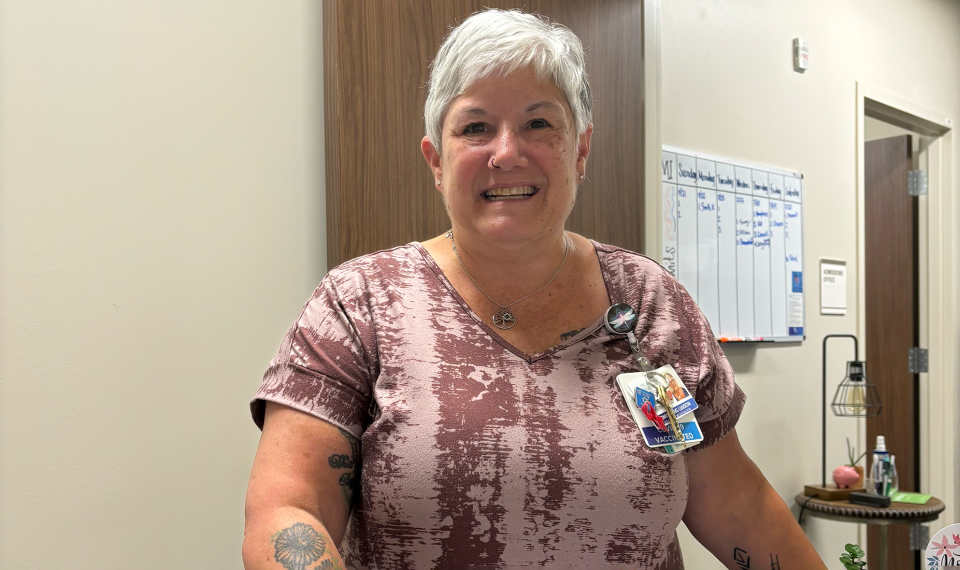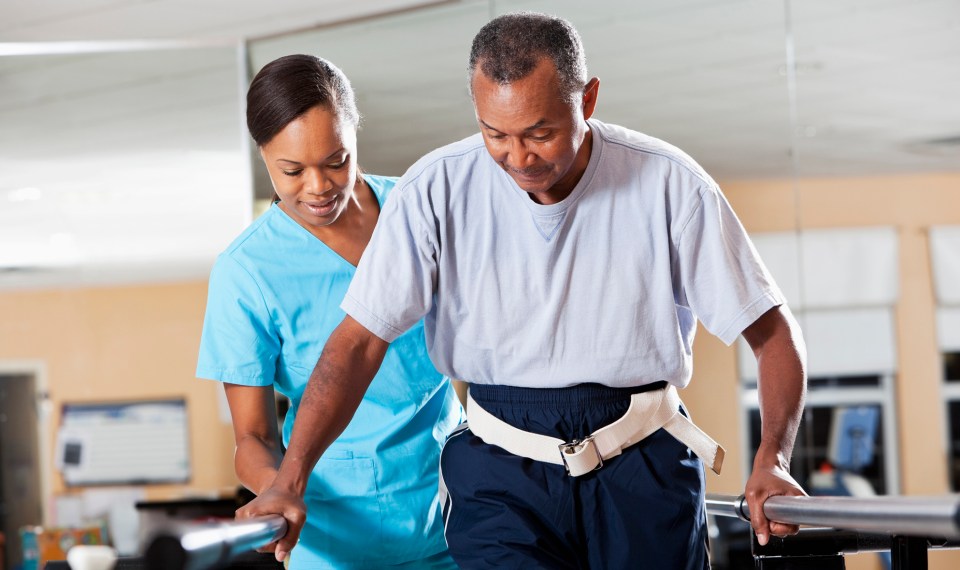A stroke occurs when blood supply to the brain is interrupted or is significantly diminished. While stroke is generally similar in presentation for males and females, understanding the risk factors and signs of stroke in men can lead to quicker treatment and better outcomes.
“A stroke can happen for several reasons—such as blood vessels getting narrow, a blood clot blocking supply or bursting of a blood vessel,” said Dr. Syed Kazmi, stroke program director at Encompass Health Rehabilitation Hospital of Round Rock. “The brain gets denied of nutrients and cannot function.”
Stroke Risk Factors in Men
With a few exceptions, risk factors for stroke are universal between sexes, and many can be managed to prevent a stroke from occurring. Risk factors that can be controlled or treated include:
- Hypertension
- High cholesterol
- Diabetes
- Obesity
- Excessive alcohol consumption
- Smoking
Risk factors that cannot be controlled include previous strokes, gender, ethnicity, certain genetic conditions and age. Because women have a longer life expectancy than men, they experience a larger number of strokes. However, in younger demographics, the instances of stroke are higher in men due largely to health status and lifestyle.
According to the CDC, nearly half of men have high blood pressure or take medication to treat high blood pressure. Men are also more likely to be smokers (one out of six men smoke), and three in four men are obese.
Many of the stroke risk factors can be reduced with proper medical oversight and management, which is why it’s paramount to be aware of your health and have a primary care physician.
“Stay connected to a health management program or preventative care from your primary care physician,” Kazmi said. “Many younger people, especially under 55 years old, do not have a primary care physician because they are seemingly not sick.”
Signs of Stroke in Men
While certain risk factors may differ between men and women, the symptoms of stroke in men and women are universal. Remembering the acronym FAST can help identify a stroke and get urgent treatment.
- F: Facial drooping
- A: Arm weakness
- S: Speech becomes altered or slurred
- T: Time to call 911
In addition to the well-known acronym, there are other early signs of stroke to be aware of. If you experience sudden blindness, dizziness or loss of balance, know that these can also be signs of stroke.
“Many people will notice these signs, but don’t connect them with the brain or a stroke,” Kazmi said. “These signs should not be missed.”
Importance of Prompt Treatment
While the signs of stroke are the same between women and men, Kazmi has recognized one additional trend with men in his many years of practice. Typically, he said, he has found that men are more likely to delay care than women are.
“I have found that men typically seek medical attention at a later time, especially younger men,” Kazmi said. “This is the age group where you can make a large difference by picking up those signs early on and acting.”
If you believe you or someone you know is having a stroke, it’s important to treat the situation as a medical emergency and seek treatment immediately, as delaying treatment can lead to more significant brain damage.
“I recently had a younger patient who initially felt weakness in his leg and had some minor difficulty walking,” Kazmi said. “Instead of seeking treatment, he went home and went to bed. The next morning, he woke up unable to move.”
Many of the preferred stroke interventions must be used within a specific time frame from the onset of the stroke. For example, current literature says clot-busting medication must be administered within 4.5 hours. A specific surgical intervention that can retrieve the blood clot should take place within six to seven hours, Kazmi said. When you promptly seek medical treatment, stroke teams can begin preparing immediately, from paramedics to surgeons.
Conversely, Kazmi said, even if you have missed a window for early treatment, it’s still paramount to receive medical attention as soon as possible to minimize potential damage to the brain, regardless of sex.
Inpatient Rehabilitation and Stroke Recovery: Greg’s Story
The content of this site is for informational purposes only and should not be taken as professional medical advice. Always seek the advice of your physician or other qualified healthcare provider with any questions you may have regarding any medical conditions or treatments.



